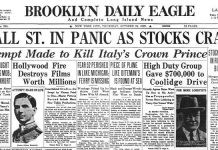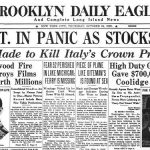
“Rehypothecation”: Wall Street Practice that could damage Bitcoin
To understand why 22-years Wall Street veteran and blockchain enthusiast, Caitlin Long thinks that “Rehypothecation” and “Commingling” are going to be the most-discussed terms in the world of cryptocurrency and blockchain soon, we would need to think in the context that Long did: traditional securities and where modern-dealers collateralized by Asset-Backed Commercial Paper (ABCP) and Repurchase Market (Repo).
Bitcoin (BTC) Price Today – BTC / USD
Please enter Coingecko Free Api Key to get this plugin works.At start, Caitlin Long says that “everyone’s backgrounds bring them to who they are today and bring them the knowledge base for recognizing trends”, which is self-explanatory to the question of why she is denouncing the increasing counter-party risks associated with Wall Street’s entry into cryptocurrencies while bringing their current settlement practices also, which she thinks, are outdated and slow. Caitlin Long explains the costs and issues associated with current systems of Wall Street, including the interactions of Intercontinental Exchange (ICE) with cryptocurrency.
In answer to “How did we get here”, Long uncovers several inefficiencies and risks came during the market’s evolution over time.
Table of Contents
HOW WE GOT HERE
NYSE (New York Stock Exchange) was not that enormous like it is today. Very long before its market cap reaches $21 trillion (more than U.S GDP of $18 trillion), before September 11, Wall Street Crash of 1929, two world wars, and even before the SEC (US Securities & Exchange Commission), 24 men standing outside of 68 Wall Street in 1792, signed an agreement of giving each other the preference in trading of securities. War bonds and stock from the newly created bank of Alexander Hamilton, dominates the “market”, and as exchange grows, the number of traders grow, and people started moving around bigger buildings until 1865 when NYSE adopted the current building.
The biggest difference between NYSE and its contemporaries was the lack of clearinghouse, which is a practice of settling transactions between buyers and sellers. People of the 20th century would ask she says, “Why not just settle at the time of the transaction? I’ll send money, and you send the shares, and the transaction will be settled in real time.”. But that was not possible before the revolution of digital systems. Like in Blockchain and Bitcoin, a private key is used for claiming the ownership of bitcoins associated with wallet, paper certificates were claims on a company. In essence, the trade was done, then shares delivered to the company which bought them in exchange for money by next day specified time.
NEED FOR CENTRALIZED CLEARING
Before the introduction of multilateral netting on NYSE, the clearing was used to be done on a bilateral basis, which means brokers had to write checks and trade shares per transaction at settlement time, for which high levels of liquidity was required as compared to multilateral netting. So, several firms had to obtain the huge amount of loans from banking sector (mostly other stock exchanges as collateral for loans, the agreement which is called hypothecation) each day in order to meet their obligations before getting paid by other firms. The overall process was known as “Over Certification” that leads to several problems for brokers and banks.
Caitlin Long further discusses several other issues and inefficiencies like “the paperwork crisis”, the great depression and others, where she emphasizes that centralization and some old legacy systems were necessary to be used for market consistency and evolution at that time, and to move towards the decentralization which has now become extremely important in this modern era, where we don’t require old legacy systems that still take 3 or 4 days like in trading through brokerage firms in Wall Street, because we can turn these processes into real-time.






























